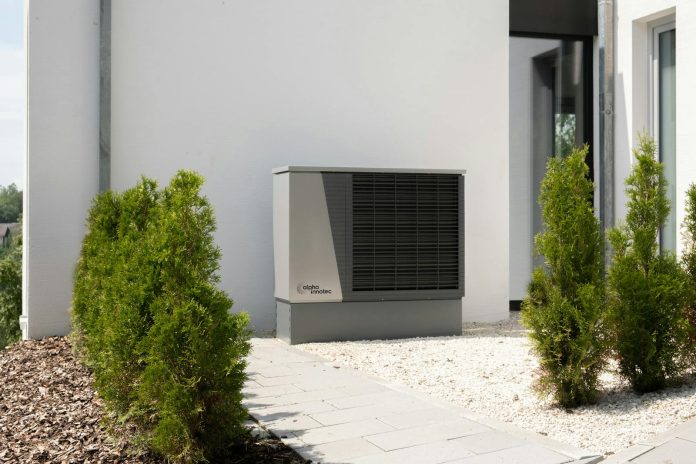
We live in a world where you can subscribe to almost anything, movies, music, cars, even coffee. The subscription economy has reshaped how we think about ownership, and now it’s knocking on the door of home comfort. Instead of shelling out thousands of dollars for a new furnace installation or AC, homeowners may soon have the option to join an HVAC subscription service that bundles equipment, installation, maintenance, and repairs into one predictable monthly fee. Think of it as “comfort-as-a-service”, a shift that could change not just how we heat and cool our homes, but how HVAC trends evolve in the years ahead.
The Subscription Economy and the Rise of the HVAC Subscription Service
We’ve trained ourselves to value access over ownership. Streaming platforms taught us that convenience and predictability matter more than having a shelf full of DVDs. Apps, groceries, even pet food arrive on autopilot. HVAC subscription services remove decision fatigue and surprise costs, two of the biggest pain points for homeowners. Once people experience the ease of “set it and forget it,” they naturally expect the same from other industries, including HVAC.
It’s not just about convenience, it’s about risk transfer. Subscriptions shift risk from the consumer to the provider. With streaming, no one worries about discs breaking, formats becoming obsolete, or managing storage space. The same psychology applies to an HVAC subscription: homeowners want to transfer the risk of breakdowns, repair costs, and outdated technology to someone else. Subscriptions succeed because they remove uncertainty, and uncertainty is what people hate most.
How an HVAC Subscription Works in Real Life
Think of it like HVAC-as-a-Service. Instead of a huge upfront investment, homeowners pay a flat monthly fee that covers the equipment, installation, ongoing maintenance, and often emergency repairs. In some models, even replacements after 10-12 years are included. It’s essentially “leasing with benefits,” but unlike a car lease, you don’t have to worry about trade-ins, resale value, or massive repair bills, it’s all bundled.
The bigger picture is a shift in identity for HVAC companies. They’re no longer equipment sellers; they become comfort providers. A subscription isn’t really about leasing at all, it’s more like a “comfort membership.” Homeowners aren’t paying for metal and ducts; they’re paying for an invisible promise: “your house will always feel the way you want it to.” That’s the core idea behind the growing HVAC subscription service model.
The Pros and Cons of HVAC Maintenance Subscription Plans for Homeowners
A subscription removes the giant upfront cost by spreading the financial hit over time. It also bakes in service, repairs, and even system replacement, which gives homeowners peace of mind and makes budgeting predictable, no $8,000 surprise bills when the AC dies in July. Beyond the numbers, HVAC maintenance subscription plans save homeowners from having to become accidental HVAC experts. Most people don’t want to learn SEER ratings, refrigerant phases, or duct sizing. They just want it to work, and a subscription outsources that homework.
The trade-off is financial efficiency versus stability. Over the very long term, subscriptions can cost more than ownership if equipment is kept far past its useful life. And while stability is what many homeowners value most, there’s also the issue of flexibility: being in a contract makes it harder to switch providers, and some models “lock” you into an ecosystem, much like Apple does with iCloud, iMessage, and AirPods. The comfort is real, but so is the commitment. Choosing an HVAC maintenance plan is as much about lifestyle fit as it is about dollars.
Why HVAC Companies Are Offering HVAC Service Plans Instead of Sales
Margins on equipment sales are tightening, and labor is the true long-term cost center. Subscriptions create steady, recurring revenue while keeping techs employed year-round. For companies, it’s not just about selling equipment once, it’s about building a lasting relationship. Think of it as shifting from being a “transactional vendor” to being a “lifetime utility partner.”
The traditional model has a ceiling: selling a unit once every 12-15 years is a transactional dead-end. Subscriptions turn HVAC into an infinite game, continuous service, long-term engagement, and lifetime revenue. The companies moving fastest see themselves less as contractors and more as utilities of the future. That’s why offering an HVAC service plan is becoming a central business strategy.
The Tech Behind Comfort-as-a-Service and Modern HVAC Maintenance Plans
Smart sensors and Wi-Fi-connected thermostats can alert contractors to issues before the homeowner notices, while AI diagnostics predict part failures and enable proactive service. This shifts HVAC from reactive (fix it when it breaks) to proactive (keep it from breaking). Without that technology, subscriptions would feel risky for providers; with it, they can manage equipment more efficiently and keep costs predictable.
Beyond sensors, HVAC units are becoming data-rich assets that reveal energy usage, failure patterns, and even occupant behavior. AI allows providers to optimize fleets of systems across neighborhoods, not just single homes. Technology, in other words, transforms HVAC maintenance plans from simple “insurance policies” into data-driven performance guarantees.
Who’s Already Trying Subscription-Based HVAC? A Look at Industry Trends
In Europe, subscription-based heating systems have been common for years, especially in regions with district heating or government incentives. In the U.S., some utilities already bundle HVAC systems into monthly bills with service included. Water heaters and solar panels were also early testers of “equipment-as-a-service,” proving the model can scale.
And it’s not just energy or home systems, the same logic is already embedded in daily life. Tesla sells “full self-driving” as a subscription, Peloton sells fitness as a subscription, and even insurance companies bundle smart home devices into their premiums. The growth of HVAC service plans shows HVAC is simply the next industry to join the “everything as a service” economy.
What HVAC as a Service Means for the Future of Comfort and HVAC Industry Trends 2025
It’s a fundamental shift: HVAC becomes less about “a product in your home” and more about “a service you rely on.” Just as people don’t think about owning a power plant but expect electricity, homeowners may soon expect comfort as a utility, not a purchase. The competition will no longer be just “who sells the best system,” but “who delivers the most seamless comfort experience.”
This shift is cultural, not mechanical. HVAC is moving from being “the thing in the basement” to part of a managed lifestyle system. Tomorrow’s smart homes will treat subscriptions like Spotify or Wi-Fi: invisible, automatic, and expected. Comfort will stop being something people manage, it will be something they simply have. This cultural transformation will be one of the defining HVAC industry trends 2025.
Will We Ever Own HVAC Systems Again, or Only Subscribe?
Younger homeowners are already subscription natives. Many don’t see HVAC as an asset like a house or car, it’s just background infrastructure. For them, subscribing makes sense because it aligns with how they already consume media, software, and even cars through leasing. Will everyone stop buying outright? Probably not. But for a significant share of the next generation, “signing up” will feel far more natural than “writing a $10,000 check.”
Some will always want to own, but ownership itself is losing cultural cachet. The next generation values flexibility over permanence. Buying HVAC feels like planting roots; subscribing feels like keeping options open. If mobility and flexibility continue to define their choices, outright ownership may become the exception, not the norm.
The idea of subscribing to heating and cooling might sound futuristic, but the logic is familiar: predictable costs, fewer surprises, and technology that keeps getting smarter behind the scenes. Just as we moved from buying DVDs to streaming everything, the next generation may not think twice about whether to “own” a furnace or AC system. They’ll simply expect reliable comfort, delivered through a plan that feels more like Netflix than a traditional purchase. That’s the promise of the HVAC subscription service, and one of the biggest HVAC trends shaping the industry’s future.








